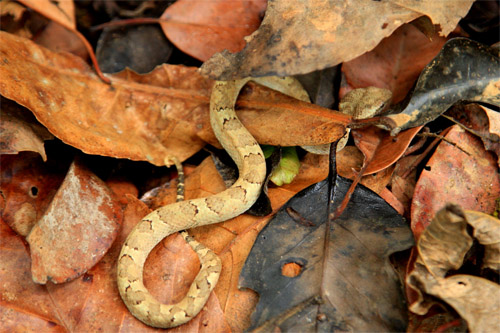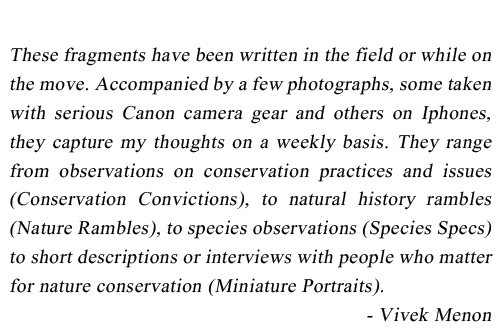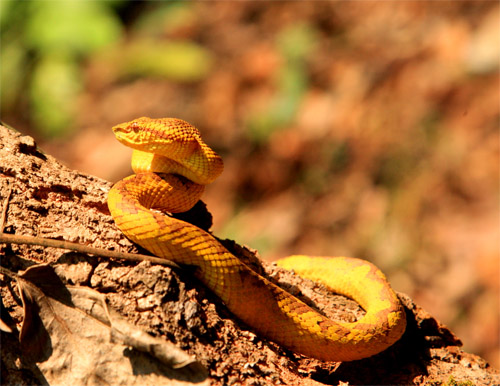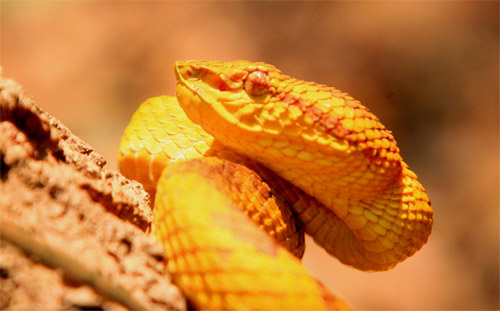A sensible pit (Species Specs)
100 metres apart, in a clearing secured by the Wildlife Trust of India as part of its elephant corridor resettlement project, lay coiled two snakes. One was pale brown, the colour of many of the deciduous leaves that lay shed at the base of large forest trees. The other a burnished gold, the colour of Buddha statues in Thai monasteries. One blended into the leaves deceptively, the other shone out in brazen defiance of camouflage. Both were pit vipers and even more surprisingly both were Malabar pit vipers (Trimeresurus malabaricus).
Highly variable snakes in terms of colouration, these different morphs were neither sex related, age related nor seasonal differences. They just happen to be, it seems. One of nature’s mysteries waiting for a solution. The snake can also appear in a grass green, an olive and even a maroon morph, ones that were not seen on the day. Their prehensile tail clasping the branches of the tree they were basking on, their triangular heads betraying their viperine affinities and a bold diamond pattern adorning their weekly keeled scales, these Malabar pit vipers were one more of the many creatures that an ‘ elephant corridor’ had secured!
The land harboured not only snakes. I saw a constant stream of black crows and blue tigers fly through on their local migration. These were not birds or avian predators, but were butterflies that were using the now safe patch of green to migrate. A chestnut tailed starling was nesting in a hollow bamboo culm. A Malabar vernal parrot pair perched right above them. So birds and butterflies, reptiles and mammals; all used the 25 acres or so of land that WTI (its partners, the Kerala Forest Department, WLT, IUCN and Elephant Family) had secured for wildlife. But, back to snakes.

Brown morph of Malabar pit viper (Trimeresurus malabaricus) camouflaged in leaves.
Photo: Vivek Menon / WTI
I looked for similarities between the two colour morphs and one was right under our noses. Mine and its. One feature that all crotalines or pit vipers share is a deep pit divided by a sensory membrane into two unequal parts that is placed between its eye and nose. At night, when the pit viper hunts, the membrane senses the infra-red radiations of the prey: when a predator is nearby, it does the same. The snake is forewarned and depending on whether it is opportunity that presents itself or a threat, it strikes or retreats. The Hindu Lord Shiva is believed to have a third eye that decimates or contemplates alike; the Malabar pit viper, like other members of its family uses its labial pit to equal measure.











